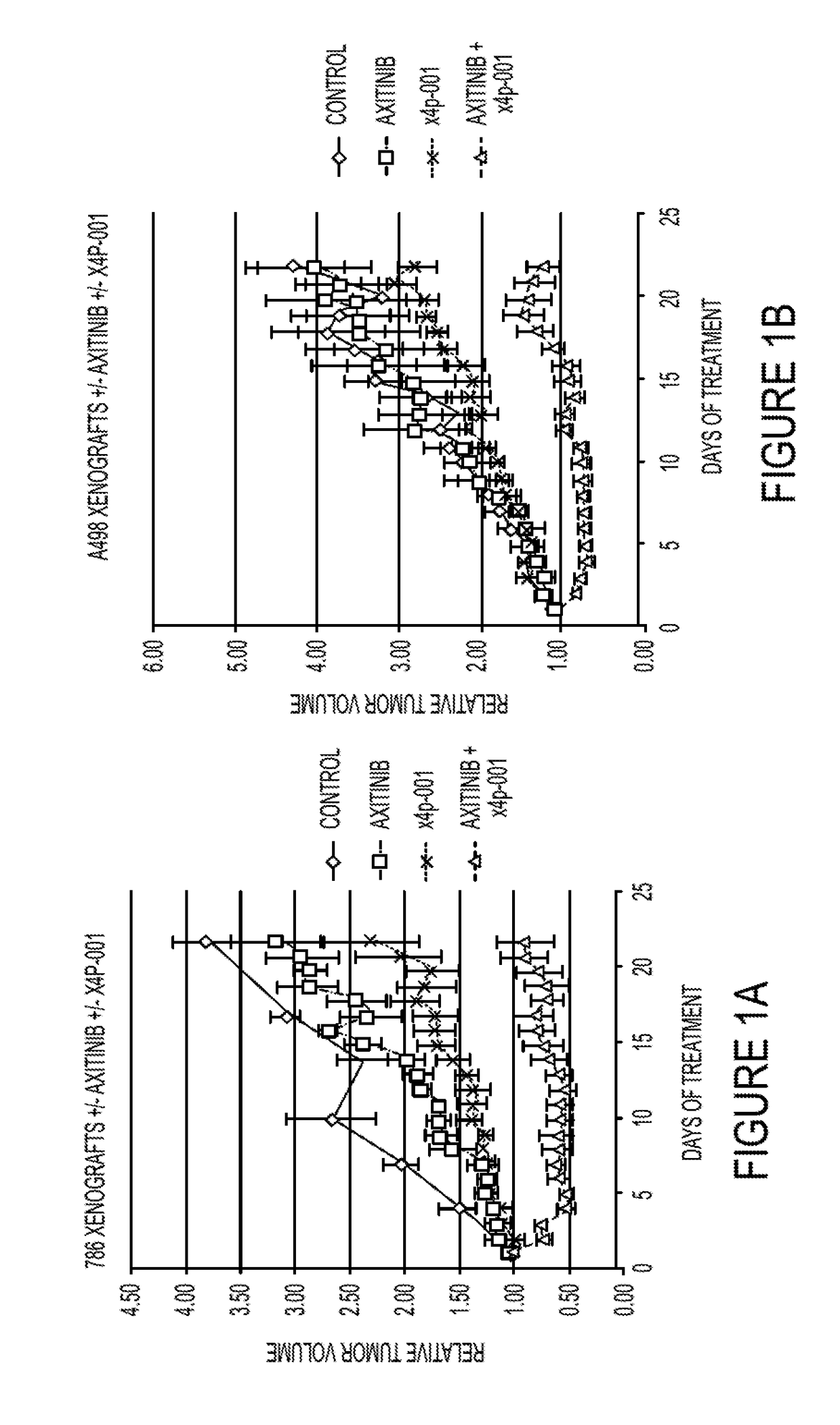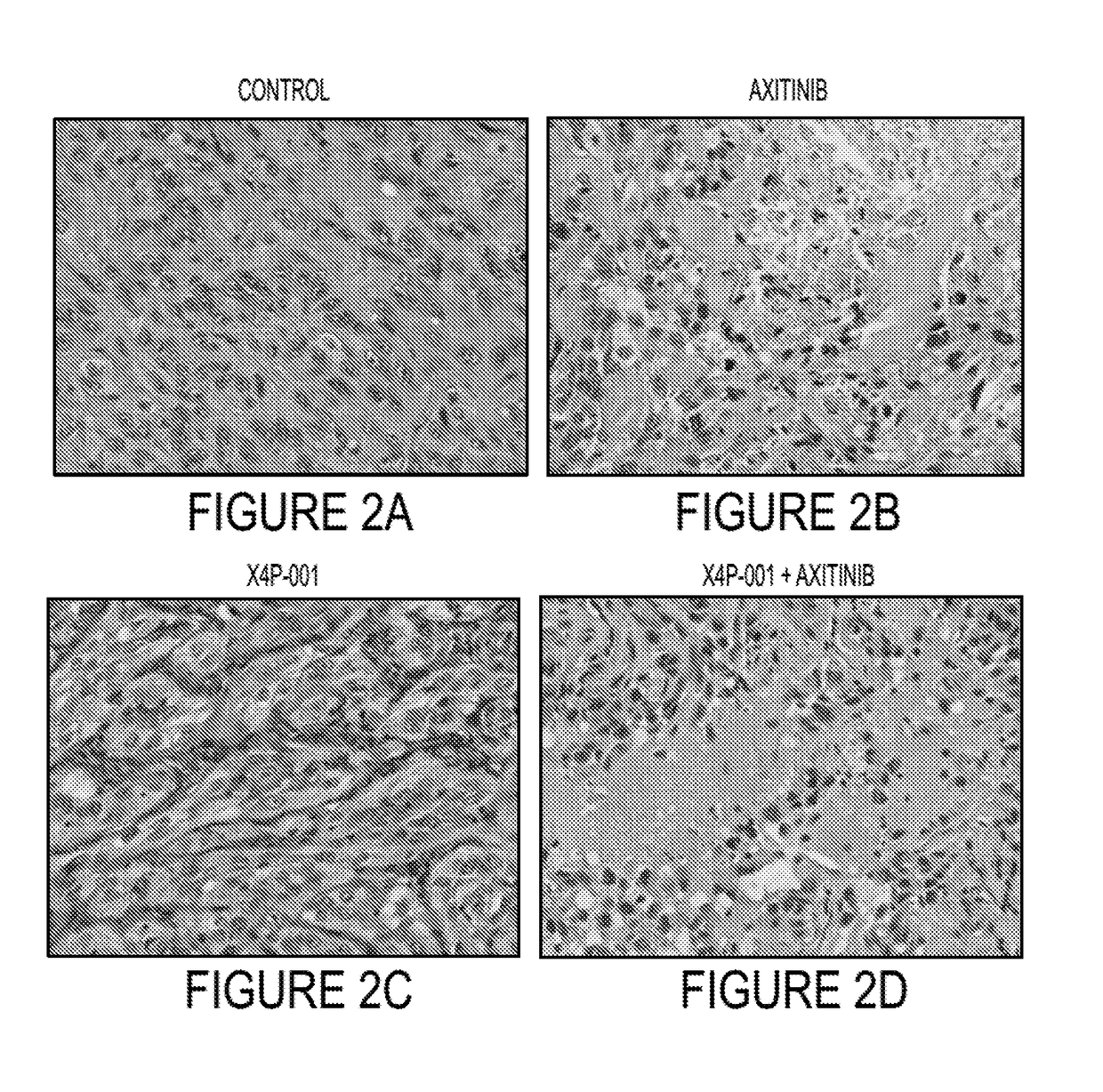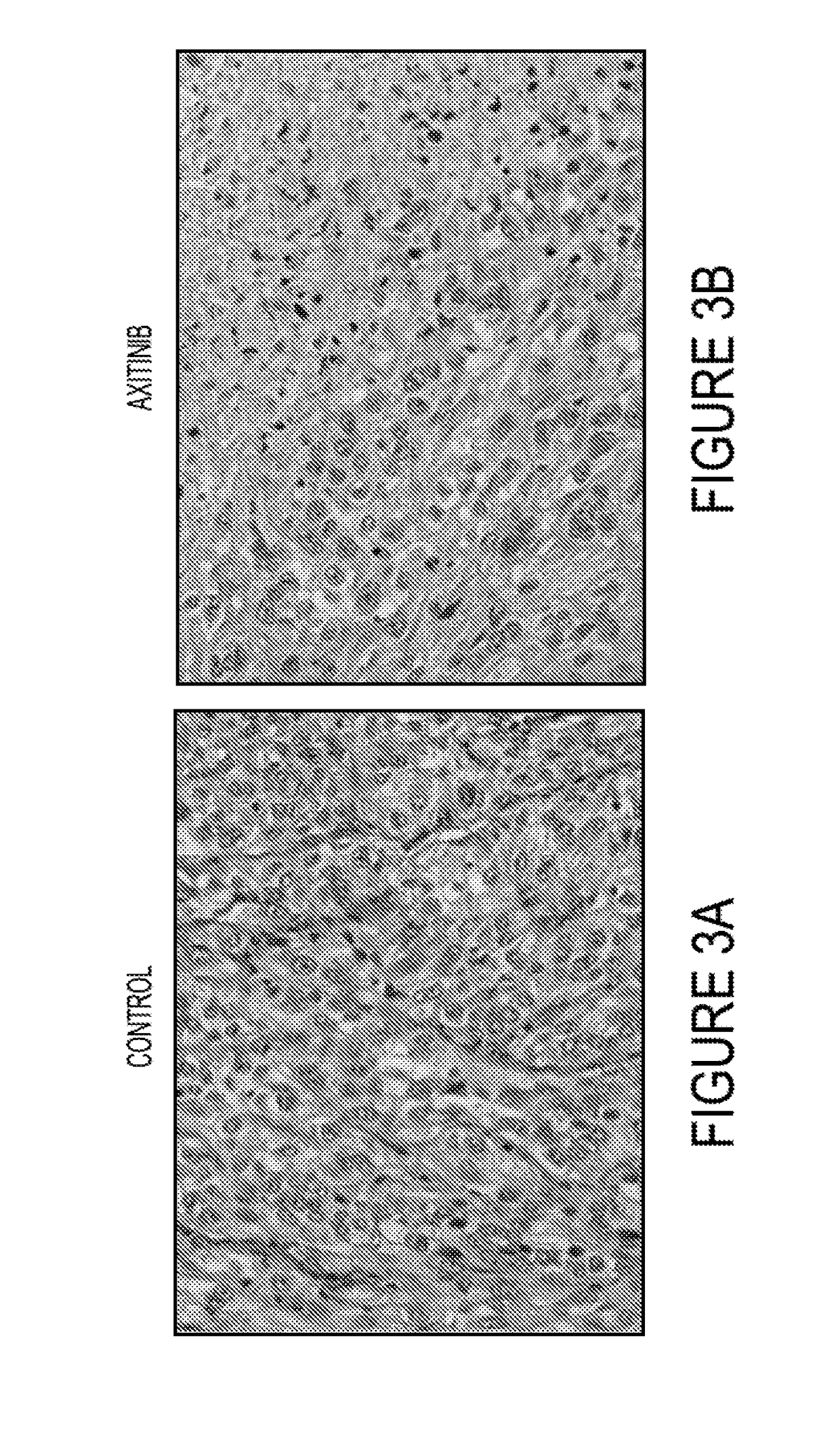Methods for treating cancer
a cancer and cancer technology, applied in the field of cancer treatment methods, can solve the problems of relapse and progression of cancer, and the approach is not curativ
- Summary
- Abstract
- Description
- Claims
- Application Information
AI Technical Summary
Benefits of technology
Problems solved by technology
Method used
Image
Examples
example 1
dels with Human Cell Lines
[0096]The effects were examined of treatment with X4P-001 and axitinib singly, and in combination on the trafficking of MDSC and other immunosuppressive cell populations and on chemokine production by RCC cells.
[0097]Mice were inoculated with 786-0 and A498 RCC xenografts, the tumors permitted to grow to ˜300 mm3, and then treatment initiated with the CXCR4 inhibitor X4P-001, axitinib, both agents in combination, or saline (control).
[0098]With each of the human cell lines, 1×107 tumor cells were implanted subcutaneously in the flanks of 36 nude / beige mice and tumors allowed to grow to roughly 7 mm in diameter. The mice were randomly divided into 4 treatment groups of 9 mice each and treated with X4P-001 (at the recommended dose), axitinib (30 mg / kg daily by gavage), both drugs, or vehicle (control). We have previously shown that MDSC tumor influx is maximal at 7 days (not shown). Therefore, on day 7, the mice were sacrificed and the tumors were measured and...
example 2
enograft Studies
[0105]Further studies are conducted in order to determine how treatment with X4P-001 and axitinib alone or in combination affects the distribution of MDSC and other immunosuppressive CXCR4+ cell populations (Tregs and CAF) and how CXCR4 expression by these cells affects their trafficking in tumor-bearing mice. Example 1 above is repeated with additional testing of syngeneic murine RCC Renca model and 786-M1A cells, the latter of which is a 786-0 variant known to express CXCR4 at extremely high levels (7). The studies with Renca cells are done as described above for the human cell lines except that tumors are also analyzed for CD4+ / CD25bright / Foxp3+ Tregs, CD3+ / CD8+ T cells in addition to MDSC and fibroblasts.
[0106]Following the procedures of Example 1, the effects of treatment with X4P-001 and axitinib on bone marrow, spleen, and tumor infiltration by CD11b+ / Gr-1+MDSC, CD4+ / CD25bright / Foxp3+ Tregs, CD3+ / CD8+ T cells, and FAP+ cancer-associated fibroblasts (CAF) are e...
example 3
and Chemokine Studies
[0107]The in vivo effects of treatment with X4P-001 and axitinib on chemokine production by RCC cells are assessed as follows:
[0108]Tumors excised from the mice undergoing treatment with X4P-001 and axitinib in Example 1 are analyzed by RT-PCR for drug-induced changes in the expression of M-CSF (CSF-1), CXCL1 (MGSA / gro-), CXCL2 (MIP-2 / gro-), MIP-2 / gro-, CXCL5 (ENA-78), CXCL6 (GCP-2), CXCL8 (IL-8), GM-CSF, VEGF, TNF, CCL22, and CCL28. The various ELR-containing CXCL chemokines listed are known to activate CXCR2 (8), a chemokine receptor recently implicated in MDSC recruitment (9). The cytokines VEGF, GM-CSF, and TNF are also thought to mediate MDSC chemotaxis into tumor tissue. CCL22 and CCL28 have been likewise implicated in the recruitment of Tregs (10, 11).
[0109]Numerous chemokines and other inflammatory mediators have been shown to regulate the trafficking of MDSC into tumor tissue (9, 12, 13). To determine which chemokines / cytokines are responsible for the i...
PUM
| Property | Measurement | Unit |
|---|---|---|
| diameter | aaaaa | aaaaa |
| molecular weight | aaaaa | aaaaa |
| solubility | aaaaa | aaaaa |
Abstract
Description
Claims
Application Information
 Login to View More
Login to View More - R&D
- Intellectual Property
- Life Sciences
- Materials
- Tech Scout
- Unparalleled Data Quality
- Higher Quality Content
- 60% Fewer Hallucinations
Browse by: Latest US Patents, China's latest patents, Technical Efficacy Thesaurus, Application Domain, Technology Topic, Popular Technical Reports.
© 2025 PatSnap. All rights reserved.Legal|Privacy policy|Modern Slavery Act Transparency Statement|Sitemap|About US| Contact US: help@patsnap.com



